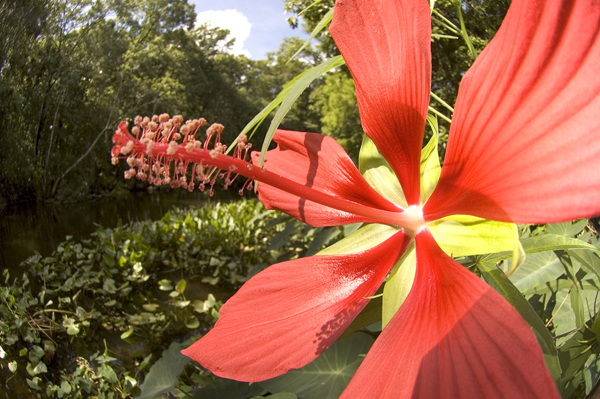Meet the Mallows
Pictured above: Scarlet hibiscus (Hibiscus coccineus) by John Moran. Article by Jeff Norcini.
During the summer, hibiscus and hollyhocks are commonly seen flowering in Florida landscapes. All are members of the mallow family (Malvaceae).
Florida is home to 36 native mallow species. Seven of those are in the Hibiscus genus. Interestingly, Wild cotton (Gossypium hirsutum) is also a member of the mallow family and native to Florida.
Florida native mallow species are found throughout the state in dry to wet sites — even in standing water, depending on the species. Only a handful occur in all regions of the state. Saltmarsh mallow (Kosteletzkya pentacarpos) is the most widespread of the showy ones, while the less conspicuous Cuban jute (Sida rhombifolia) is the only mallow that occurs in nearly every county. It is one of four Sida species native to Florida and, on roadsides, is often much shorter than its potential height of 3 feet due to mowing.
Arguably the showiest mallow, and one that is easy to spot while walking in a natural area or even at highway speeds, is Scarlet rosemallow (Hibiscus coccineus), sometimes referred to as Swamp hibiscus. It has bright red flowers that can be up to 8 inches in diameter.
Listed below are common showy mallow species. All occur in moist to wet soils, although Comfortroot (Hibiscus aculeatus) will tolerate moderately dry soil. Crimsoneyed rosemallow (Hibiscus moscheutos) and Saltmarsh mallow (Kosteletzkya pentacarpos) are the only two that occur in coastal areas. Click on the species name for details about where they occur in Florida as well as photos. To view a list of all mallows native to Florida, use the Advanced Search page of the Florida Plant Atlas.
- Comfortroot (Hibiscus aculeatus)
(see also Comfortroot profile) - Scarlet rosemallow (Hibiscus coccineus)
(see also Scarlet rosemallow profile) - Lindenleaf mallow (Hibiscus furcellatus)
- Swamp rosemallow (Hibiscus grandiflorus)
(see also Swamp rosemallow profile) - Halberdleaf rosemallow (Hibiscus laevis)
- Crimsoneyed rosemallow (Hibiscus moscheutos)
(see also Crimsoneyed rosemallow profile) - Saltmarsh mallow (Kosteletzkya pentacarpos)
(see also Saltmarsh mallow profile)
DID YOU KNOW?
The name mallow is derived from the Latin word malva meaning “mallow-plant” or “mauve.” “Mallow” is also the French word for mauve.
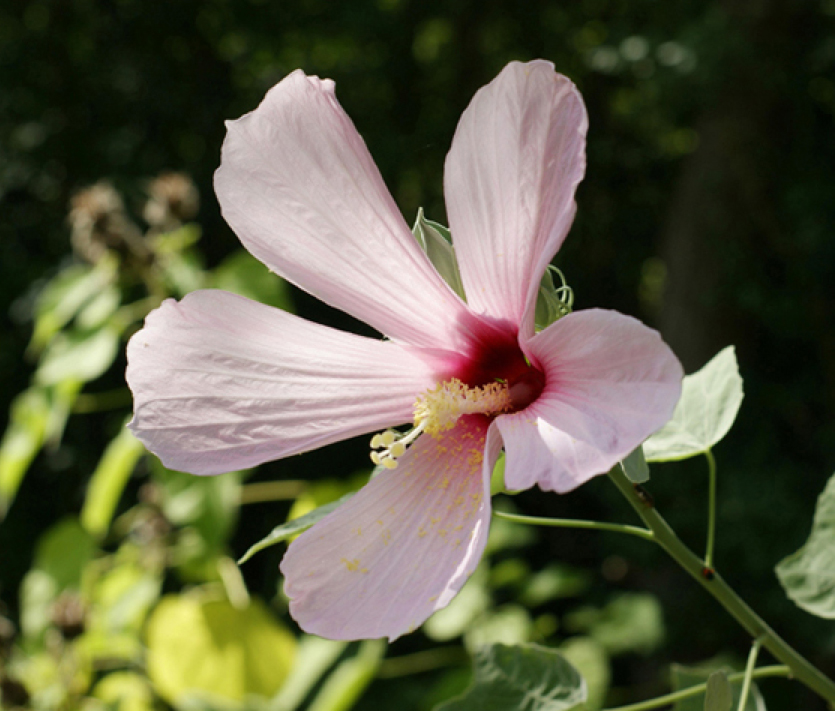
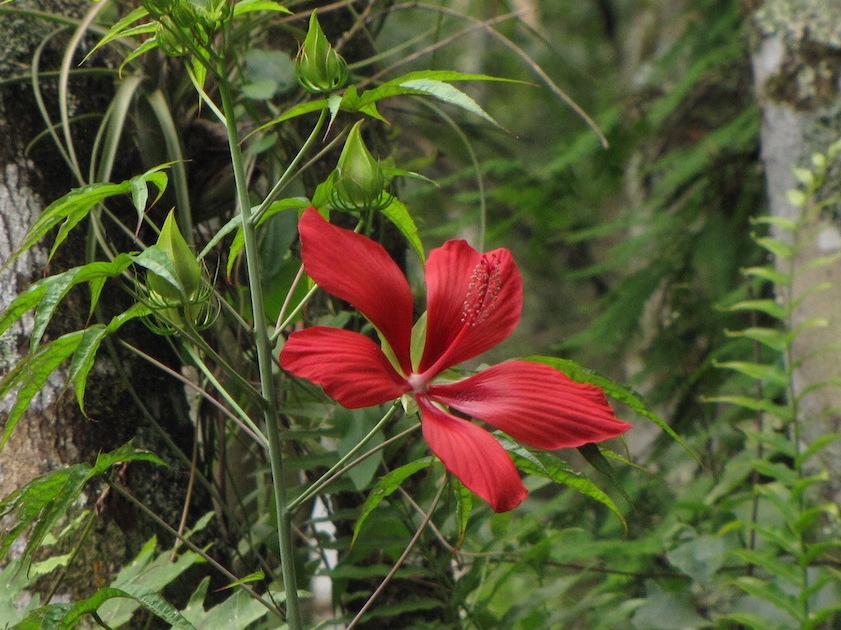
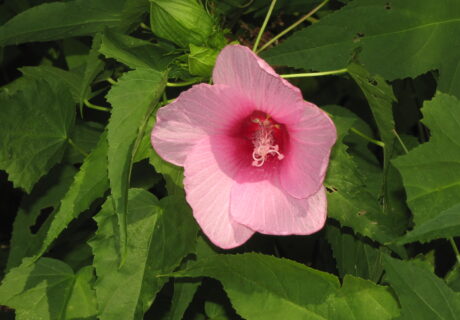
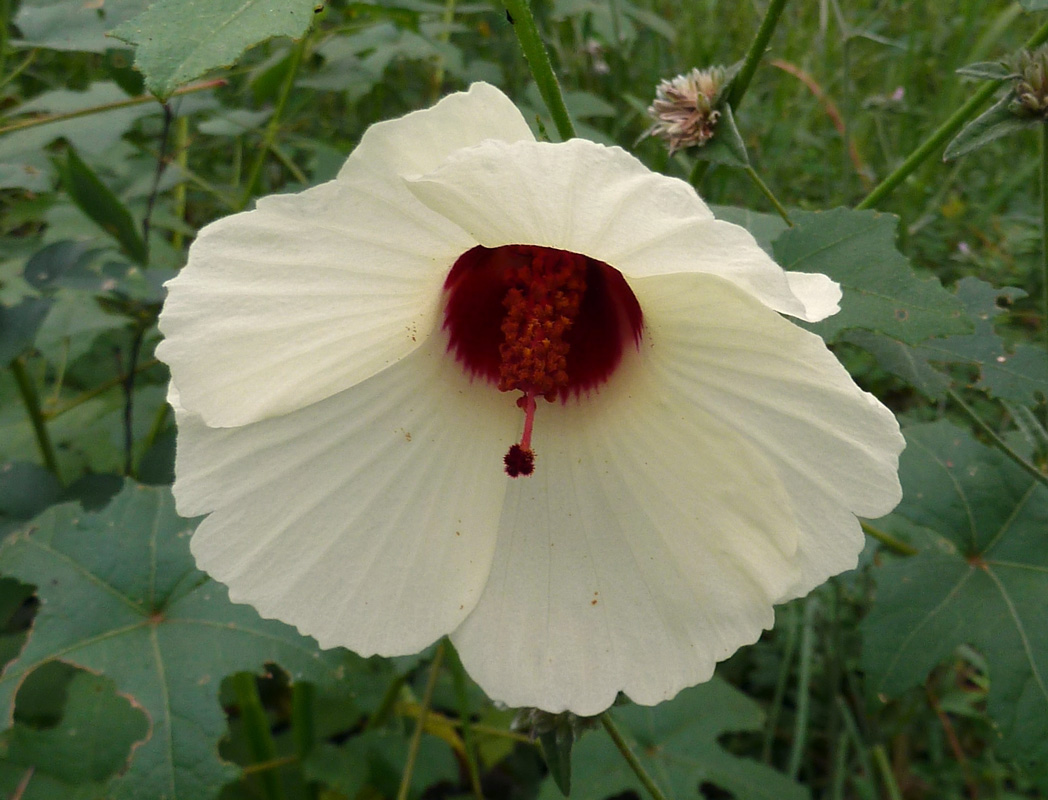
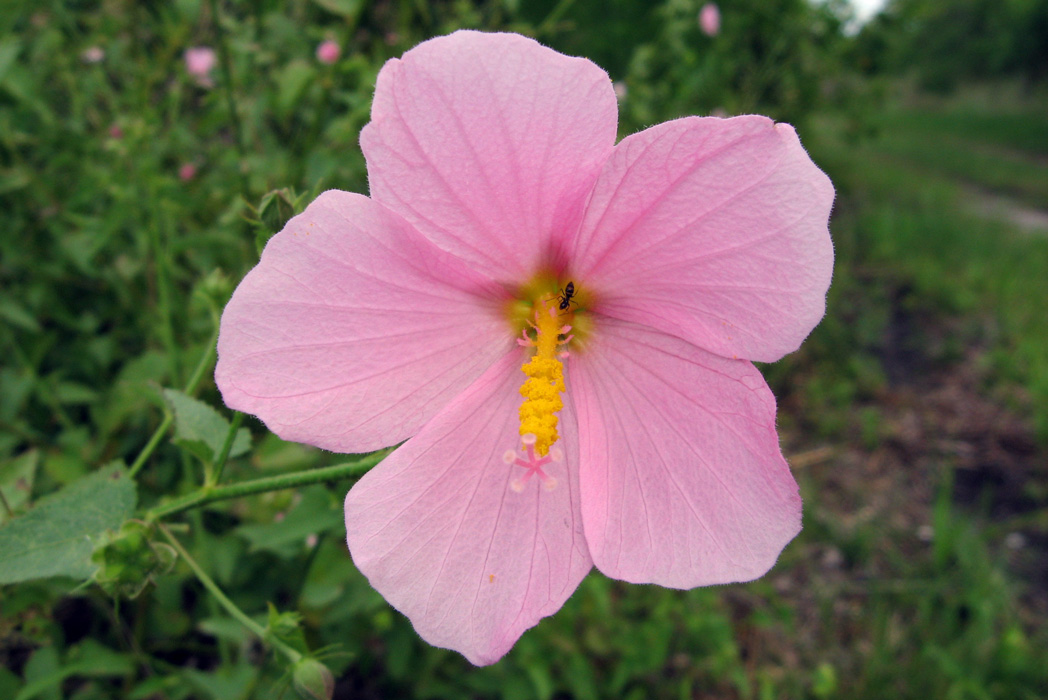
FUN FACT
The sweet confection marshmallow was originally made from the root sap of Marshmallow (Althaea officinalis), a mallow species native to Europe.
When you are out and about enjoying the summer beauty that Mother Nature has blessed us with, please don’t pick wildflowers. If you want to preserve the memory of a wildflower, take a picture — it will last longer. Many of our native wildflowers reproduce only by seed. Picking a flower reduces the ability of that plant to reproduce and for that population of wildflowers to sustain itself. If you want to pick wildflowers, plant some in your yard or in containers on your patio or porch. Wildflower seed packets are available from the Florida Wildflower Seed and Plant Growers Association. Click here for seed packet availability and ordering. Seed packets of Florida native wildflowers also may be available at garden centers specializing in Florida native plants. To find a native garden center near you, visit the web site of the Florida Association of Native Nurseries.
TAKE ACTION
Contact your county maintenance yard supervisor to ask that roadside native grasses and wildflowers in specific locations be spared. On state and U.S. highways, contact your Florida Department of Transportation District Wildflower Coordinator. Click here to find the coordinator for your district.
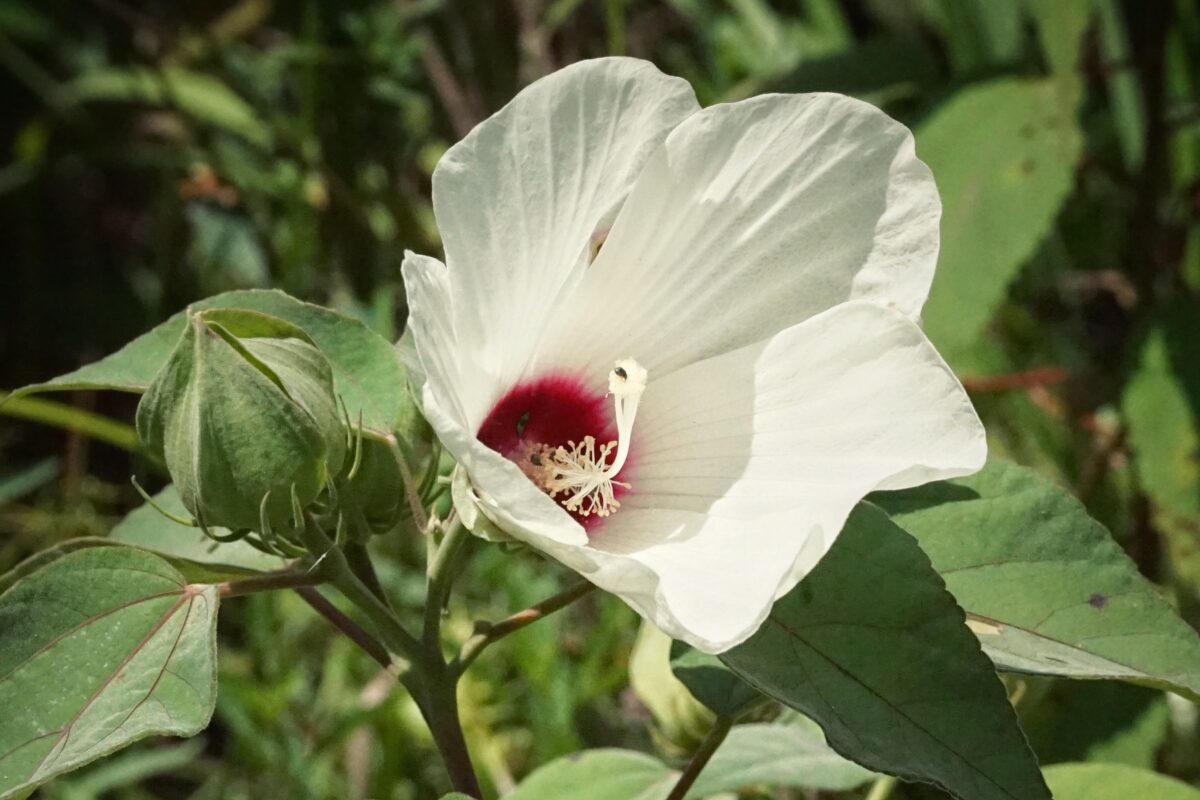
Submit your photos!
You can post photos of native wildflowers you see to the Florida Wildflowers Flickr group. For all submissions, please include the plant’s scientific name (common name is OK) and its location. If you are uncertain about a wildflower’s nativity to Florida, consult the Atlas of Florida Plants or email it to us before posting.

